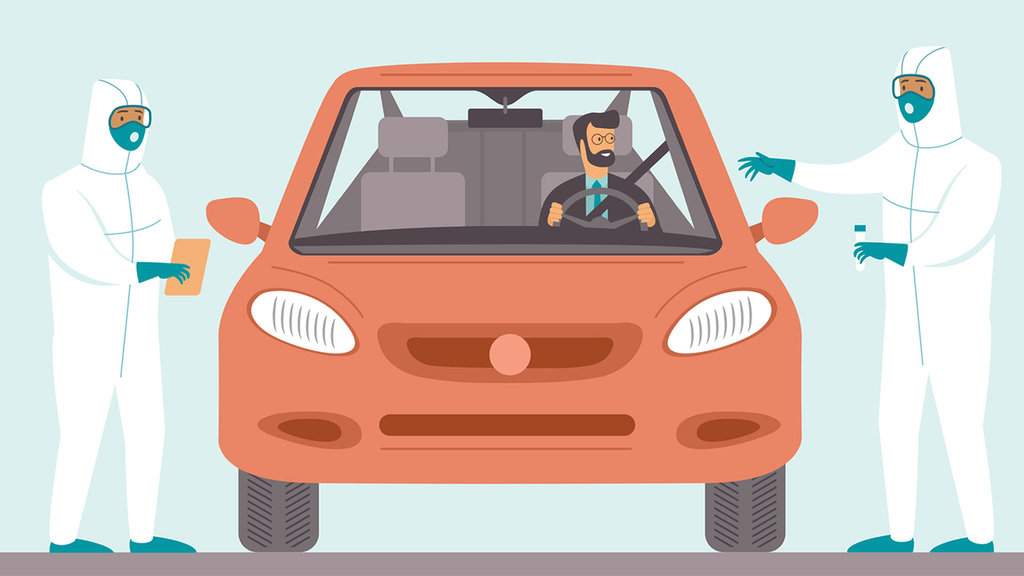CORONAVIRUS
Covid-19 one year on in the auto sector: what have we learnt?
GlobalData highlights the lessons learned over the last year, as the automotive industry faced its greatest challenge

Operating at much lower market levels, but those demand levels don’t last forever
Extrapolating forward lockdown demand levels can be costly, as several OEMs are learning with the ensuing chip shortage. At the demand nadir of a 48m global SAAR in April 2020, OEMs can be forgiven for fearing the worst and scaling back future component orders.
While that would seem sensible cash and inventory management for auto-specific components, for those components that have willing markets elsewhere, as in the case of chips, it can prove costly.
It suggests that OEMs and suppliers need to undertake an in-depth analysis of their supply chains, understand where bottlenecks are likely to occur and stratify their commodity purchases accordingly.
This is what Toyota - the masters of lean production - did, in learning lessons from the Fukushima nuclear disaster, and others need to follow suit now. The cost of warehousing supplies of crucial components is minimal compared with the impact on the production of supply chain breakages.
However, many of these same things were said during the financial crisis and the Fukushima disaster. There was an expectation that risk mitigation would see more dual sourcing and deeper dives into supply chain tiers below Tier 1. Not much of that came to pass through.
The industry largely reverted to prior behaviours, at a short- to medium-term cost that’s likely over and above any savings made through rigid adherence to the supply chain management manual.
CASE order re-emphasised
Chronologically, we should always have been looking at CESA, but it’s not as catchy. Connected has been here and now for a while, and will evolve further with more artificial intelligence, machine learning and vehicle to infrastructure developments and concomitant data management opportunities.
Electrification has been given the jump-start it needed via Covid-19. Several factors are at play here. Market incentives to assist demand have been very prevalent in Europe, where the share of BEVs sold in the market leapt from 3.16% in Q4 2019 to 10.71% in Q4 2020.
Government-sponsored incentives have coincided with a raft of new BEVs on the market as OEMs move to meet 2021’s CO2 emissions target and more stringent future regulations. Additionally, under lockdown with more working from home, individuals’ personal mobility needs have changed - range anxiety is not such an issue when commutes are commuted.
Finally, under Covid-19 there’s less appetite for shared mobility or public transport, so those fortunate enough to have the means will have added a BEV as an option to their household.
Since the internet’s inception, vehicle retail has looked ripe for digitisation. However, for whatever reason, it’s never really taken off.
Sharing’s rise has undoubtedly been disrupted by Covid-19. One only has to examine the data provided by Uber in its SEC filings to understand this. The question is whether this is a long-term shift in people’s sensibilities or whether, after vaccination, we get a return to pre-pandemic trends.
We have also seen the ride-hail companies pivot their business models towards goods delivery. This has been a major contributory factory in LCV demand remaining relatively buoyant as major delivery fleets have seen their business surge as already growing online shopping was lifted further by lockdowns that curtailed physical shopping.
Finally, the jury is out on autonomous vehicles. With sharing disrupted, the business case for autonomous loses some of its lustre. Much of the push for autonomous has been to see shared mobility businesses move to driverless, thus reducing fixed and variable costs and bringing the companies sustainable profitability to justify sky-high stock valuations.
While ADAS systems will inevitably continue their progression, it seems doubtful presently that Level 4 and Level 5 autonomy will be seen at scale anytime soon outside of tightly policed geofenced areas.

Resilience of the sector
All participants in the auto value chain have demonstrated remarkable resilience to come out the other side of the pandemic relatively intact. Undoubtedly there are lessons in cash management and strategic prioritization that will become pillars of many companies’ operational strategies for years to come.
Early in the crisis, many companies reached for the oxygen provided by the opening of new credit lines. This buffer helped get companies over the hump of the first wave of the pandemic while later recovery in market levels, allied with a laser-like focus on costs and the bottom line, saw many players roar back to profitability in the second half of 2020.
Digitisation of automotive retailing – at last
One area that has demonstrated more resilience than most is automotive retail. Since the internet’s inception, vehicle retail has looked ripe for digitisation. However, for whatever reason, it’s never really taken off.
Sure, consumers use the net to research and evaluate their next purchases, but the customer journey never really evolved through the whole buying process. With many dealers forced to close their doors due to lockdowns, dealers and national sales companies were forced into a rapid re-evaluation to save their businesses. Never has necessity is the mother of all invention seemed more apposite.
The pandemic has left a lasting existential question as to the very future of mobility.
Now, for automotive retail, it’s no longer a case of “clicks-to-bricks" but more a case of Click and Collect. Retailers are offering doorstep delivery of test drives and new vehicle purchases. Electronic signatures and credit checks are commonplace. In short, much of the friction has been taken out of the buying process.
It’s easy to conceive that future showrooms will be just that. Places where people need to kick the tires and can visit as part of their buying process. Everything else will be handled digitally, removing much pain from the buying process.
The very future of mobility
Right at its very core, the pandemic has left a lasting existential question as to the very future of mobility. Many of the assumptions around future mobility and modal planning were centred on the development of cities.
However, cities are likely to look very different in the future thanks to the pandemic. Working from home has taken a grip on white collar employment. GlobalData’s survey of nearly 5,000 people showed that only 27% of people want a return to the office permanently. The majority – at 45% – want some form of splitting of time between home and office, while the remainder wants to carry on working from home permanently.
This cultural sea change upends the very essence of cities. There will be fewer cars and less demand for urban transportation services of whatever ilk. Many companies are in the process of downsizing their offices in anticipation of this change. Our cities face the prospect of hollowing out to a degree.
The lasting effect of the pandemic might just have been to save the car. Its death has long been predicted. But people living and working further from transportation hubs will require some form of personal transportation and bicycles, e-bikes and e-scooters won’t always cut it.
Into this space will step the car, in just the same way as it did in the 20th century when suburban flight took hold. Except this time there’s no limit on commute time when we can all telecommute. In the UK, the most searched-for location for houses is now Cornwall, in the south-west of the country, usurping London at the top of the list.
In Cornwall, a car is a necessity. And that may well be the lasting lesson for the sector.
